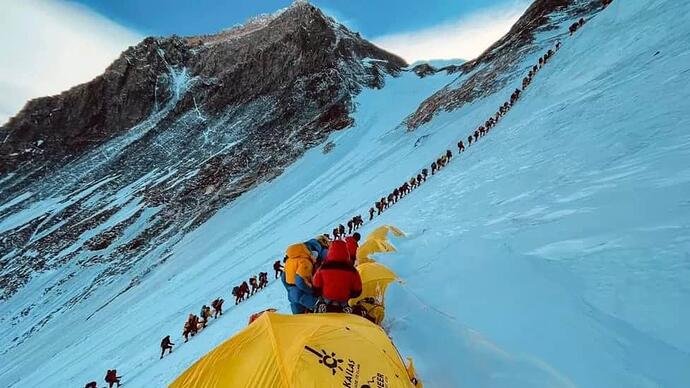Just before reaching the summit of Mount Everest, Australian engineer Jason Kennison told his mum in a FaceTime call that he would see her when he got back.
He was fulfilling a lifelong dream to stand on top of the world and raise funds for his favoured charity, Spinal Cord Injuries Australia.
But that static-filled video call was the last time Gill Kennison would see her son alive. As the 40-year-old descended from the summit, he caught high-altitude sickness and died.
Mr Kennison is among 12 confirmed fatalities from the spring climbing season, one of the deadliest in recent years. It has just concluded but five mountaineers remain missing. The deaths already exceed the 11 lives lost in 2019, when overcrowding on the picturesque yet treacherous terrain was highlighted by a viral photo of one long queue to the summit.
This year’s victims succumbed to the perennial risks of climbing Everest - three Sherpas died in a serac or ice fall, and the others fell ill like Mr Kennison.
But the high number has renewed scrutiny on overcrowding after a record number of climbing permits were issued in Nepal, and deepened concerns about the impacts of climate change on the mountain.
Everest expeditions are a major source of income for Nepal, whose government is often criticised by some Western climbers for allowing anyone who can pay the $11,000 (£8,800) fee for a permit to go up. The government denies this.
On top of the permit, each climber spends at least $26,700 on an expedition in Nepal, including on permit fees, gas, food, guides and local travel, according to sherpas.
Lines form when mountaineers need to catch a window of favourable weather to reach the summit. They need to avoid jet streams or narrow bands of strong wind in the upper atmosphere. Queues can also be held up by inexperienced and unprepared climbers.
Climbers have also had to contend with warmer temperatures, that have melted glaciers and caused lakes to form. Scientists noted that due to climate change, temperatures on the Tibetan Plateau, where Everest is located, have increased by around 2C over 40 years from 1979.
Allowing any Tom, Dick or Harry with cash to spare to climb Everest is plainly irresponsible … ![]()

